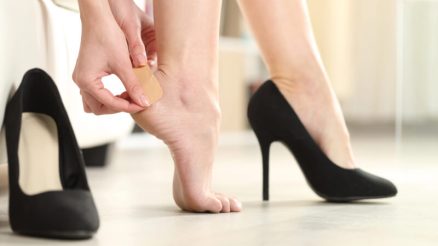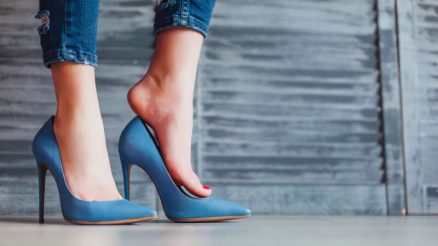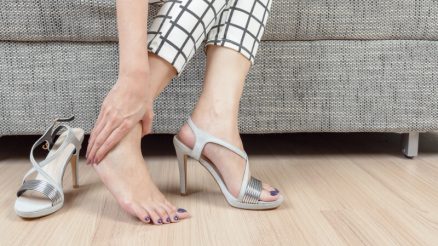Plantar fasciitis is a common and often debilitating condition that causes sharp heel pain, particularly with the first steps in the morning or after periods of rest. It occurs when the plantar fascia – a thick band of tissue running across the bottom of your foot, connecting your heel bone to your toes – becomes inflamed. While many factors contribute to its development, including foot structure, activity levels, and weight, one significant culprit often overlooked is footwear, especially certain types of heels.
For those suffering from plantar fasciitis, or even those looking to prevent it, understanding which types of heels to avoid is crucial. The wrong shoes can exacerbate existing pain, hinder recovery, and even trigger the condition in healthy feet. Let’s delve into what to steer clear of.
The High-Heeled Problem: Why Heels Worsen Plantar Fasciitis
High heels, by their very design, alter the natural biomechanics of your foot and ankle, placing undue stress on the plantar fascia and surrounding structures. When you wear high heels:
- Increased Arch Strain: The elevated heel shifts your body weight forward onto the balls of your feet and toes. This forces your foot into an unnatural, exaggerated arch position, which puts constant tension and strain on the plantar fascia. Imagine pulling a taut string tighter – that’s what happens to your plantar fascia.
- Shortened Calf Muscles: Prolonged use of high heels can lead to a shortening and tightening of the calf muscles (gastrocnemius and soleus). Tight calf muscles reduce the flexibility of the ankle and can pull on the Achilles tendon, which in turn connects to the plantar fascia. This indirectly increases stress on the plantar fascia.
- Reduced Shock Absorption: Many high heels, especially stilettos, offer minimal cushioning or arch support. This lack of support means your foot absorbs more impact with each step, sending jarring forces directly to your already inflamed plantar fascia.
- Altered Gait: Wearing heels changes your natural walking pattern, often leading to shorter strides and an altered foot strike. This can further strain the foot and ankle.
Specific Heel Types to Avoid
While the general rule is to limit high heels, some specific styles are particularly detrimental for plantar fasciitis sufferers:
1. Stiletto and Ultra-High Heels (Over 2 Inches)
These are arguably the worst offenders. Their extreme height (typically 3 inches or more) and narrow base create maximum pressure on the forefoot and excessive strain on the plantar fascia. The lack of stability also puts you at a higher risk of ankle sprains, which can further complicate foot health.
2. Pointy-Toed Heels
Beyond the heel height, the toe box shape matters. Pointy-toed heels cram your toes together, potentially leading to other foot issues like bunions and hammertoes, but they also contribute to the overall rigidity and lack of natural foot movement, which is detrimental to a sensitive plantar fascia. The restricted space means your toes cannot spread out and act as natural shock absorbers.
3. Heels with No Arch Support
Many fashionable heels, especially those with thin soles or flimsy construction, offer virtually no anatomical arch support. Without proper support, your foot’s arch can collapse or overpronate, putting increased stress on the plantar fascia with every step. Even a moderate heel can be problematic if it lacks this crucial support.
4. Wedges with Excessive Height or Rigidity
While wedges might seem more stable than stilettos due to their broader base, extremely high wedges (again, over 2-3 inches) still create the same forward lean and plantar fascia tension. Furthermore, if the wedge sole is excessively rigid and doesn’t allow for any natural foot flexion, it can prevent the foot from absorbing shock properly and maintaining its natural gait.
5. Backless Heels or Mules
Shoes that lack a back strap, like mules or some slides, require your toes to constantly grip the shoe to keep it on. This sustained gripping action can contribute to toe muscle fatigue and alter the natural toe-off phase of walking, indirectly increasing stress on the plantar fascia.
What to Look for Instead
Instead of focusing solely on what to avoid, it’s also helpful to know what to seek out for plantar fasciitis-friendly footwear:
- Low to Moderate Heels: Opt for shoes with a heel height of 1 inch or less. A slight heel can actually be beneficial for some, as it can reduce tension on the Achilles tendon, but anything higher than 1.5 inches typically becomes problematic.
- Good Arch Support: Look for shoes with built-in, supportive arches that conform to the natural curve of your foot. If your shoes lack this, consider adding over-the-counter orthotic inserts.
- Cushioning: Adequate cushioning in the sole helps absorb impact and reduce stress on the heel.
- Spacious Toe Box: Ensure your toes have enough room to splay naturally, preventing compression and allowing for proper foot function.
- Secure Fit: Shoes that fit well and don’t slip off easily reduce the need for your foot muscles to overcompensate.
Conclusion
Living with plantar fasciitis requires a holistic approach, and footwear plays a pivotal role. By understanding the biomechanical stresses imposed by certain high heels and actively avoiding them, you can significantly reduce pain, promote healing, and prevent future flare-ups. Prioritizing comfort and foot health doesn’t mean sacrificing style entirely; it simply means making smarter, foot-friendly choices that support your body’s natural alignment. Your feet will thank you!








